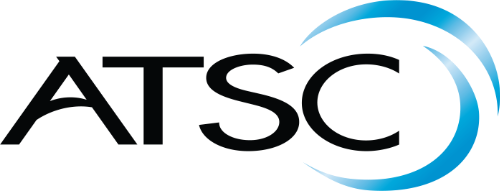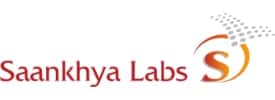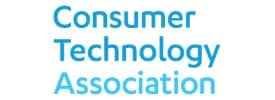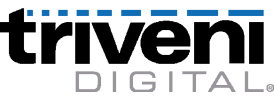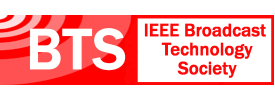- About
- Members
- Sponsors
- Subcommittees
- About Our Subcommittees
- Technology Group 3
- Implementation Team 1 – Advanced Emergency Information
- Implementation Team 2 – India
- Implementation Team 3 – ATSC 3.0 Conformance
- Implementation Team 4 – Brazil
- Implementation Team 5 – Tower Network
- Implementation Team 7 – Caribbean
- Implementation Team 8 – Automotive
- Planning Team 4 – Future Broadcast Ecosystem Technologies
- Planning Team 5 – Automotive Applications
- Planning Team 6 – Global Recognition of ATSC 3.0
- Planning Team 9 – Sustainability
- Technical Documents
- News
- Events
- Spotlight ATSC 3.0
- Contact Us
- Member Login
- Member Meetings
- Advanced Search
Search Site
Member Links
- About
- Members
- Sponsors
- Subcommittees
- About Our Subcommittees
- Technology Group 3
- Implementation Team 1 – Advanced Emergency Information
- Implementation Team 2 – India
- Implementation Team 3 – ATSC 3.0 Conformance
- Implementation Team 4 – Brazil
- Implementation Team 5 – Tower Network
- Implementation Team 7 – Caribbean
- Implementation Team 8 – Automotive
- Planning Team 4 – Future Broadcast Ecosystem Technologies
- Planning Team 5 – Automotive Applications
- Planning Team 6 – Global Recognition of ATSC 3.0
- Planning Team 9 – Sustainability
- Technical Documents
- News
- Events
- Spotlight ATSC 3.0
- Contact Us
- Member Login
- Member Meetings
- Advanced Search
Media Report: ‘World Peace’ Looms
Posted on May 1, 2013 in ATSC News
CONSUMER ELECTRONICS DAILY
‘World Peace’ Looms in Next-Gen Global DTV Standard, ATSC Chief Says Rivals ‘Want Our Viewers’
LAS VEGAS — Global interoperability and spectrum efficiency need to be the biggest corner- stones of any next-generation broadcast system if terrestrial broadcasters want to retake valuable competitive ground lost to wireless carriers, streaming services and other content-delivery rivals, various speakers said Sunday at the NAB Show’s Broadcast Engineering Conference. Though terrestrial Ultra HD and 3D TV are on the list of desired features of the next-gen system, they’re nowhere as high on the priority scale as other attributes like mobility or interactivity, or so it appeared from the many speakers who gave presentations at the conference.
Broadcasters are “at war” with the wireless carriers, which “want our viewers, they want our spectrum and they want our advertisers,” said Mark Aitken, vice president-advanced technology at the Sinclair Broadcast Group, in a fiery call-to-action speech that drew spontaneous applause from many in the crowd. For years, Aitken has been calling broadcasters the “horse and buggy” of the NASCAR circuit, he said. That’s why broadcasters “must act now” to begin to deploy a next-gen terrestrial broadcast platform, Aitken said.
Wireless carriers have launched content delivery service trials, and through those trials, “they’re showing the ability to customize what gets delivered to specific consumers on a variety of devices,” Aitken said. On those metrics, terrestrial broadcasters can’t compete, he said. Of wireless carriers, “given their infrastructure, given their leveraging of the LTE environment, we’re not talking small venues, we’re talking quite literally of the ability to extend themselves to a nationwide coherent service, and we are left out of that,” Aitken said.
Aitken agrees the next-gen platform needs to be “harmonized based on global standards,” he said. “We’ve reached a point where the United States may be a significant market, but the only way the values are leveraged on a global scale is through the utilization of global standards. And by the way, the harmonization of those standards provides the basis for us to be able to do a lot of the fancy footwork that otherwise we’d be incapable of doing on other platforms,” including the possibility of terrestrial, over-the- air Ultra HD or 3D TV, Aitken said.
On that score, the U.S-based Advanced Television Systems Committee is working within the year- old multinational Future of Broadcast Television (FOBTV) initiative to promote deployment of a single global next-gen terrestrial-broadcast DTV standard, speakers said. The ATSC expects by the end of 2015 to finalize next-gen ATSC 3.0 as a “candidate proposal” that would then await FCC approval and vie for a role in a global standard, said Jim Kutzner, PBS senior director-advanced technology, who chairs ATSC’s “Standards Group 3” on the development of ATSC 3.0 and sits on the ATSC board. Robert Seidel, CBS vice president-engineering and advanced technology, who chaired the “Advanced Technologies for Television” track of the Broadcast Engineering Conference, said that if Kutzner’s timing is correct, it would put ATSC 3.0 on pace to be finalized almost exactly 20 years after the FCC adopted the original ATSC standard for digital TV in the U.S.
As for how ATSC 3.0’s late-2015 completion might figure in a global standard, Seidel told us it’s much too soon to speculate, but that he sees various technologies around the world coming together on a global standard, much like the Grand Alliance scenario that shaped U.S. DTV policy. Seidel recalled that some 22 proposals first emerged in the early 1990s vying to become the DTV standard in the U.S. before being “winnowed down” to the five that became the backbone of the Grand Alliance that’s the basis of today’s DTV system. Some of the 22 proposals that lost out were “paper tigers,” while others failed in lab and field trials, Seidel said.
One expediency in finding the best technologies that might comprise the next-gen global broadcast system is that some will have gotten valuable “air time” through actual real-world testing, Seidel told us. One example, he said, was that KBS in Korea tested 4K Ultra HD terrestrial trans- missions and reception from Oct. 9 to Dec. 31 under special temporary authority of the Korean government using the DVB-T2 transmission method and the new High Efficiency Video Coding (HEVC) algorithm. Cho In-Joon, a KBS research engineer who spoke at the conference Sunday, said KBS plans to repeat the trial on “a more sophisticated level” later this year. Like other content providers throughout the world, KBS plans to make a big Ultra HD splash at next year’s World Cup soccer championship in Brazil, he said.
Several speakers said the ATSC has shared data with FOBTV, as has DVB and other standards groups throughout the world. ATSC President Mark Richer said he will soon step down as FOBTV’s in- augural chairman after completing his one-year term. “FOBTV is not another standards organization, we have plenty of those,” Richer said. “Those major standards organizations are involved in FOBTV. This is a joint effort, but we’re not trying to set the details of another standard. We want to find the common technologies and then work with the standards organizations and figure out how we’re going to standardize them.” FOBTV’s goal is “to see if we can come to some kind of world peace for the first time in terrestrial broadcasting standards.”
FOBTV’s work is “important” because terrestrial broadcasters throughout the world “need to have more leverage” with CE manufacturers and with their respective governments, Richer said. “And one way to do that is to have a global strategy that will make things a lot easier on all fronts.” The future devices “we’re aiming at” are “untethered” and “they’re not wired,” he said. “And if you have those devices, they’re typically going to move across borders. Some of you are here visiting the United States from other countries. In the future, we would like your DTV receiver to work wherever you go.” The FOBTV effort is “moving forward,” though not as fast “as we’d like it to go,” Richer said.
Wenjun Zhang, chief scientist at the National Engineering Research Center of DTV in Shanghai, China, said the FOBTV technical committee he chairs plans this week to begin drafting its “call for technologies” on the next-gen global system that Richer mentioned. If all goes well, the technical committee expects in about a year to begin evaluating the technologies it selects, Zhang said. His committee has identified 12 “scenarios” that need to be mandatory in a next-gen system, with global interoperability as the top requirement, he said. But the list also includes requirements for mobile reception, spectrum efficiency, and provisions for network operability, interactivity, 3D and Ultra HD and “immersive” audio, he said. The system also must provide for emergency alerts and “accessibility” for those with disabilities, he said.
One reason there’s a patchwork of five mutually inoperable DTV systems throughout the world was that digital started 20 years ago, “and at that time, we had no practical experience with digital terrestrial broadcasting,” said Peter Siebert, executive director of DVB, another FOBTV- member standards group. “So different regions chose, for probably very good reasons, different technologies.” Another factor was that 20 years ago, “chipset technology was not as far-developed as it is today,” Siebert said. “Basically, you had to make a choice what you put into your chip, and across different regions, you made different choices.” Today, chipsets are “not the limiting factor” they once were, he said. “So now the time is right to go for one standard, which can be implemented in a single chip,” he said.
Still, devising a single global standard will require bridging the regional differences that exist “even today,” Siebert said. For example, Japan has “very strong motivation” for 4K Ultra HD “and even beyond, which of course is a very technologically challenging project,” he said. Contrast that with lower- income regions, which are “happy” to beam standard-definition digital TV to their populations at lower implementation costs, he said. “A future standard has to take all this into account, but I think we will be able to do it.”
ATSC 3.0 “almost undoubtedly” won’t be backward-compatible with today’s ATSC system, Kutzner of PBS said. So “in order to make it successful, we need to make sure the improvement in additional functionality is really sufficient to warrant the implementation,” he said. ATSC 3.0 will be crucial to keeping broadcasters “viable” amid competition from second-screen content providers, he said. Given ATSC’s plans to finalize ATSC 3.0 by December 2015, Kutzner said he’s “a little concerned” about the Motion Picture Experts Group’s stated plans not to finalize its “3D audio” spec until January 2015. That’s “a little later than we would prefer, but as time goes on, we’ll see how it goes,” he said.
The NAB Show is host to “the first public demonstration” of HEVC encoding and decoding, said Thierry Fautier, senior director-telco solutions at Harmonic, which bills itself as “the leading HEVC company.” At CES, “you could see smoke-and-mirror demonstrations” of HEVC, Fautier said. “Each time you asked where the stream was coming from, the guy didn’t speak your language,” he said. “To be very honest, many people came back from CES and asked me, ‘Thierry, what do I take away out of those demonstrations?’ And I said, ‘Come to NAB, you’ll see an encoder talking to a decoder on a real network, and you can measure the bits in the network.’” That’s “the difference between CES” and NAB, he said. CEA President Gary Shapiro in an email declined comment.
HEVC decoding for CE products “will require silicon,” and the first half of 2014 is when “you’ll get the first production samples” of 10-bit 4K processors, Fautier said. Assuming mass production of HEVC chips can happen in 2015, that’s when TV sets and other CE products incorporating HEVC decoders will reach “cost-effective” pricing, he said: “Otherwise, the market will have to wait.”
For the benefit of “those who don’t know,” HEVC “was the work of 200 people for 10 years, so it’s optimized for many uses — mobile, TV, tablet, 4K, 8K,” Fautier said. “It’s for a pretty broad range of applications.” Asked by an audience member to comment on the one-stop patent-pool implications of HEVC, Fautier said: “The only thing I can tell you is there are probably 10 times more patents in HEVC compared to H.264, and therefore it will take more time to put everybody in the same bucket.”
Another audience questioner, Chris Johns, chief engineer at BSkyB, asked Fautier where the “bottlenecks” currently exist in Ultra HD that impede developing production HEVC “workflows.” Fautier responded: “Do you remember 10 years ago when there was one hour of HD per day and the rest was SD or converted? And the frustration of people paying for very expensive sets when there was no content?” The same holds true today for Ultra HD, he said. For Ultra HD to get off the ground and thrive, it needs 4K content availability at 60, or preferably 120, frames per second, plus the rights, the production work- flow, the bandwidth, the set-tops and “decent-priced” TV sets, he said. “Once you have all your ducks aligned, probably in three years, then we can talk. For the time being, my personal opinion is that Ultra HD is good for special events on one channel per service provider, but it’s like HD 10 years ago.”
Consumers today are “more technologically demanding and savvy than in any other era,” and broadcasters, through next-gen technologies, will need to find ways “to connect with them and meet their requirements and exceed their expectations,” said Kevin Gage, NAB chief technology officer, in a Sunday Broadcast Engineering Conference keynote. As with the conversion to digital HDTV, “broadcasters will drive the bulk of this innovation,” Gage said. “So many have said that broadcasters don’t innovate, but we know this is patently untrue. Yet we are now challenged to elevate our innovation to the next level with expansive thinking that confronts traditional assumptions.”
Next-gen broadcast systems will require “greater flexibility and agility than in the past to meet un- known and ever-changing market dynamics and competition,” Gage said. The “importance of content discovery” is a “common thread” among all traditional and newfangled content delivery systems, present and future, Gage said: “How do ever-increasingly fragmented audiences find the programs they want in the forms and on the devices they want them? Traditionally, you had two knobs — one for tuning, one for volume. Today, it’s much more complex and competitive, and becoming ever so more every day. We need to ensure that consumers can still find and enjoy broadcast content easily and quickly on whatever devices they’re using at that moment.”
This article is reprinted from the April 9 issue of Consumer Electronics Daily, copyright 2013 by Warren Communications News Inc., and it is reprinted by permission of the publisher.
Posted in ATSC News
News Categories
News Archives
Subscribe
Subscribe to The Standard, our monthly newsletter. Learn More
Join ATSC
ATSC is a membership organization with both voting and observer categories. Voting members include corporations, nonprofit organizations, and government entities, and they participate actively in the work of ATSC. Observers are individuals or entities not eligible to be a voting member.
Subscribe to our Newsletter
Subscribe to The Standard, our monthly newsletter, to stay up-to-date with ATSC news and events around the world.
Site Links
Contact Us
Advanced Television Systems Committee, Inc.
1300 I Street NW, Suite 400E
Washington, DC 20005
Do you have questions about ATSC?
About ATSC
The Advanced Television Systems Committee, Inc., is an international, non-profit organization developing voluntary standards and recommended practices for digital terrestrial broadcasting. ATSC member organizations represent the broadcast, broadcast equipment, motion picture, consumer electronics, computer, cable, satellite, and semiconductor industries. ATSC also develops digital terrestrial broadcasting implementation strategies and supports educational activities on ATSC standards.
© 2024 ATSC
